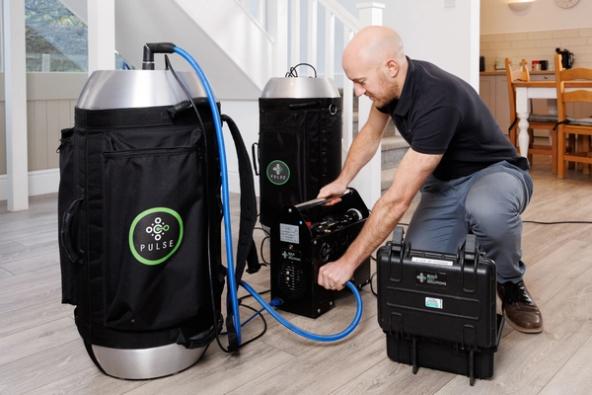Article
Pulse air tightness measurement technique approved for use under UK Building Regulations
The Ministry of Housing, Communities & Local Government (MHCLG) hosted a public consultation from 1st October 2019 to 7th February 2020 on proposed changes to the Building Regulations. The aim of the consultation is to uplift the energy efficiency of new homes through changes to Part L (Conservation of fuel and power) of the Building Regulations.

The government has this week published its full response to the Future Homes Standard consultation. Set to be implemented in two phases, the first update to Part L1a, expected to be enacted later this year, is to deliver a 31% CO2 emissions saving compared to the current Part L1a 2013.
The consultation response includes confirmation that:
- The Low-pressure Pulse (LPP) method has been approved as an alternative airtightness testing method option under Part L1a, including for use in very air tight dwellings.
- The full test procedure is set to be detailed within a new independent approved airtightness testing methodology, which will be an updated CIBSE TM23.
- 100% of all new dwellings are to require an airtightness test, including small developments
- An updated version of SAP (10.2) is to include an input field for a 4Pa measurement result, as presented by a Pulse device.
Luke Smith, Managing Director of Build Test Solutions comments:
Here at BTS we are delighted with this outcome and it is testament to the extensive field trial testing and third party validation that has taken place over the years. It has been quite the journey but to reach this milestone and see the positive responses made by so many industry respondents is fantastic. We firmly believe that Pulse delivers a pioneering approach to fabric air permeability measurement; not only allowing the industry to more readily step up to the new requirement for 100% sample testing but perhaps most importantly of all, providing greater choice to clients and testers alike.
What is the low-pressure Pulse technique?
The system is a compressed air based alternative to the blower door fan method. The device is placed centrally in a dwelling and a burst of air is released over a 1.5 second period. The background pressure is sampled at high frequency and the signature that the burst of air creates provides a representation of the air leakage characteristics of the property under test. Crucially:
- The measurement is made directly at low pressure, thus providing an accurate representation of the air leakage characteristics of a building under normal conditions.
- The test process is extremely quick and also less susceptible to the effects of wind and buoyancy.
- It is low impact and low disruption, causing minimal disturbance or undue stress on the building
- The equipment is UK born and manufactured, with the equipment scalable for also testing leakier existing residential buildings as required under PAS 2035 as well as larger multi-residential and non-residential premises.



